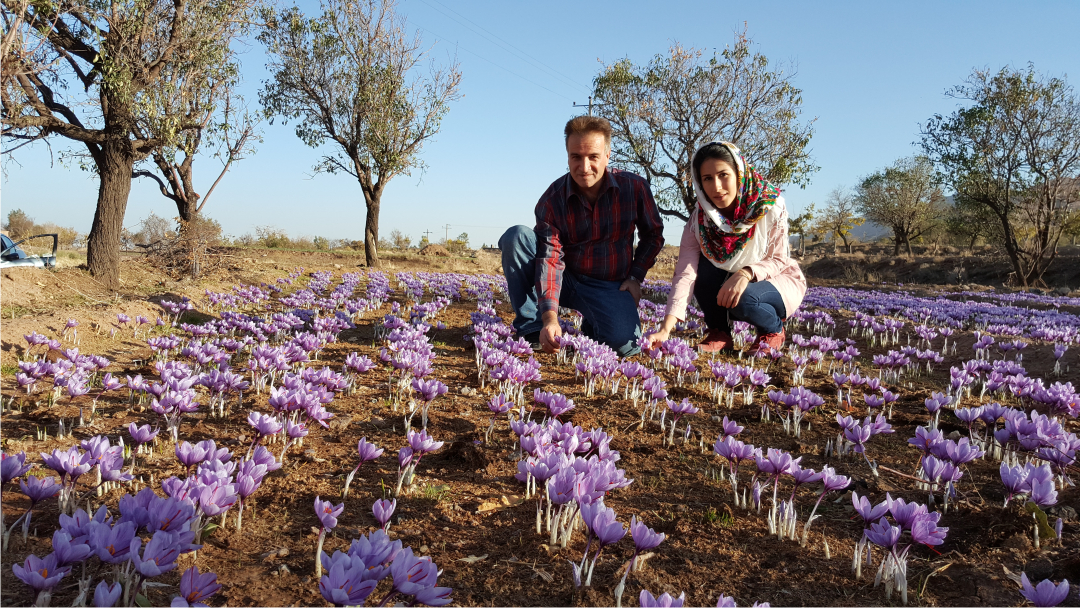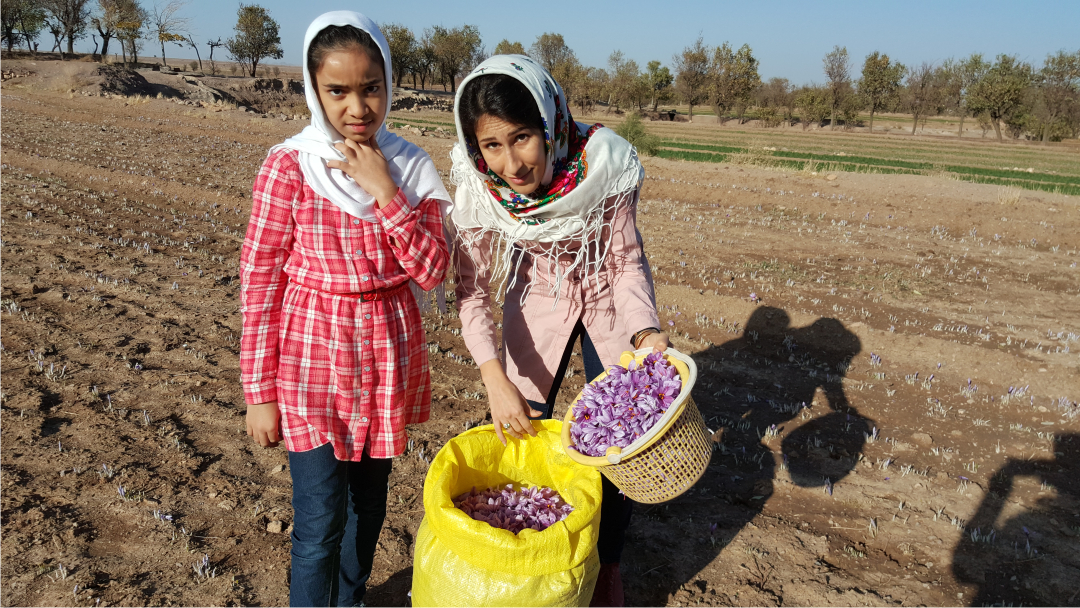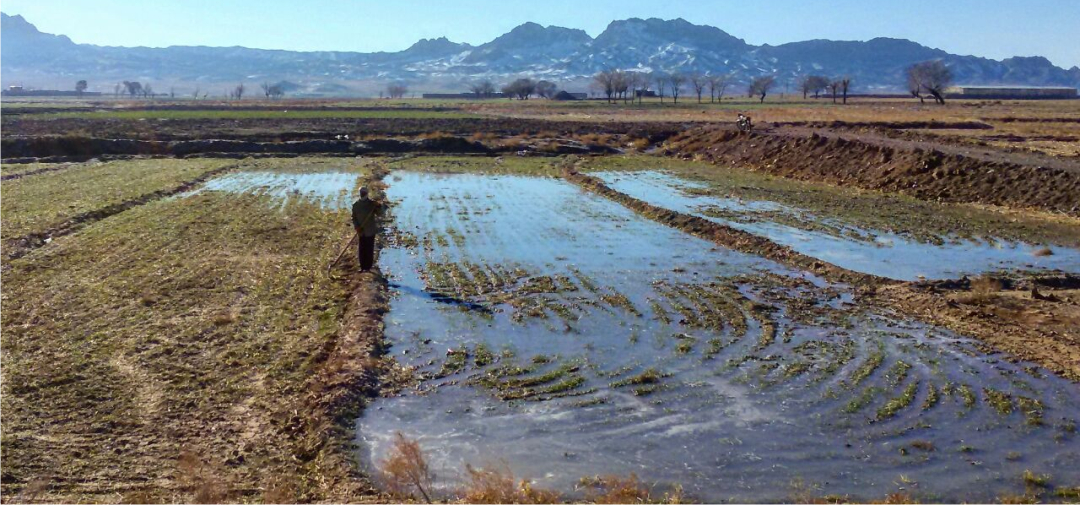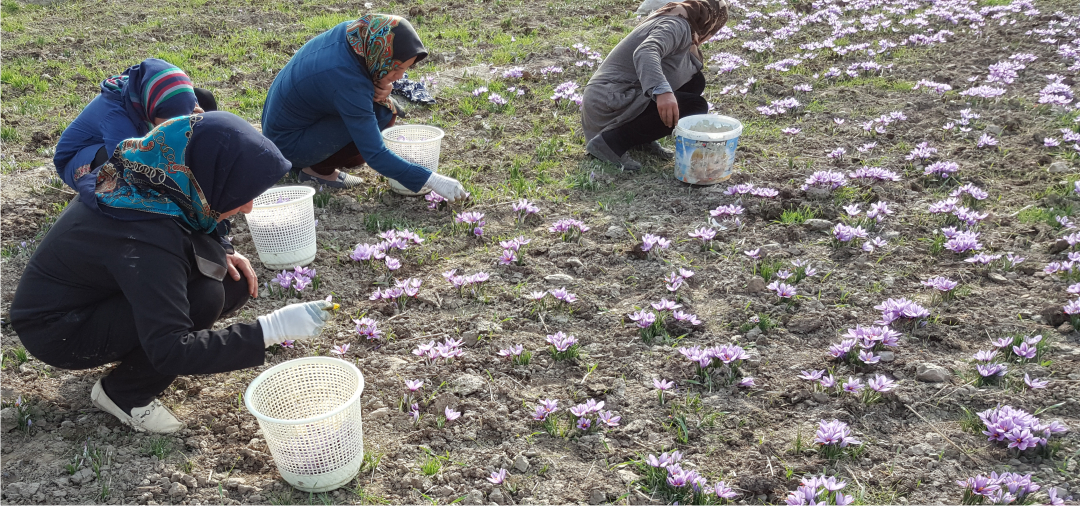Saffron crop 2015: our journey to the home of the red gold saffron
Iran hosts the biggest cultivation area for saffron. The most popular region for growing the Crocus Sativus, that yields the red gold of Persia in autumn/winter, extends from Mashhad in the northeastern part of Iran over Torbat-e and Gonabad to Ghaenat. During the cold season, everything revolves around saffron. Starting with the preparation of the crop to the national “Saffron Festival”. Because in Iran, Saffron is part of the culture. This year also, we have been on-site and have not only risked a look over our contracted farmers’ shoulders but also lent a hand and received an outstanding crop that we of course brought home.
Arriving in October, we started our fifteen-day journey all about saffron in Mashhad, the second biggest city after Teheran. Here, the saffron crop starts in late autumn and exceeds two weeks until the magic starts from the beginning the next year. However, Mashhad was for my wife and me less satisfactory, why we saved our capacities and went on to Torbat-e Heydarieh. Fortunately, the saffron crop begins in a two-week cycle along our route. Torbat-e Heydarieh, our second station is an attractive destination to us through its large bazaar. In the right season, a colorful vivid hustle can be observed. Local saffron farmers sell tons of whole saffron blossoms and also the national Saffron Festival takes place from 31. October until 03. November. This festival is fully committed – and how should it be otherwise – to saffron. The Highlight is the awarding of the winner with the most beautiful snapshot on the subject saffron crop.
Nevertheless, also Torbat-e Heydarieh could not completely convince us with its offer. Thus, we moved on to Gonabad, my husband’s hometown, our annual travel’s highlight. Here, not only our contracted farmers awaited us but also the reunion with the family. Every year, we may look forward to a truly culinary delight with all kind of treats, enough to get a whole village fed up. Grilled meat, all sorts of vegetables and salads are served and arranged on big plates. A must for every food is saffron rice, since primarily saffron constitutes the foundation of the oriental aromas. As well, curcuma, nuts, limes and pomegranates are used in order to underline the individual taste. Thereby, everybody is welcome because in Iran great emphasis is put on hospitality, no matter if you are part of the family or not.

|

|
Despite all the joy of reunion, we did not lose our focus and started working, since a highly promising crop was waiting for us. For saffron, it is essential that it receives sufficient sun during summer and not too much rain. It is still often watered by hand in order to guarantee an optimal development of the flower bulb and therefore, in the following months of the flower blossom. We looked back at a hot summer and were going through a dry autumn – ideal conditions. But the harvesting process also has its pitfalls. Early in the morning, even before sunrise, we were already on the fields and began to pick the blossoms with our long-term contracted farmers . Thereby, it is very important to have reliable people on site, because saffron needs special attention and should be harvested on a dry day with no exposure to light, in order to protect its characteristics, such as its colour intensity and taste from fading. Thanks to the partnership with our farmers and many hours of craftmanship, we were able to comply with these requirements and achieved a considerable amount of saffron blossoms shining in brilliant violet. In the next step, the everywhere appreciated red pistils were removed from the crocus. With filigree work all the saffron threads were cut out of the blossoms by means of a small scissors and put overnight on a untreated grid to dry.
By that the hardest part was done. Finally, the dried saffron threads were packed in big cans, ready for the safe journey home. The closing ritual, as you could say, is the watering of the fields. They are flooded widely to prepare the crocus bulbs for the next year. Because the crocus is a continuing plant and comes back the next year even stronger and rewards us with even sturdier saffron threads. Traditionally, the saffron crop ends in Ghaenat, the definately most known region for growing saffron. Nevertheless, we could neglect this last station, thanks to our more than satisfying yield in Gonabad. So we enjoyed our last day – the work already done with good conscience - until we started our journey back home to Germany with generously filled pockets.

|

|
